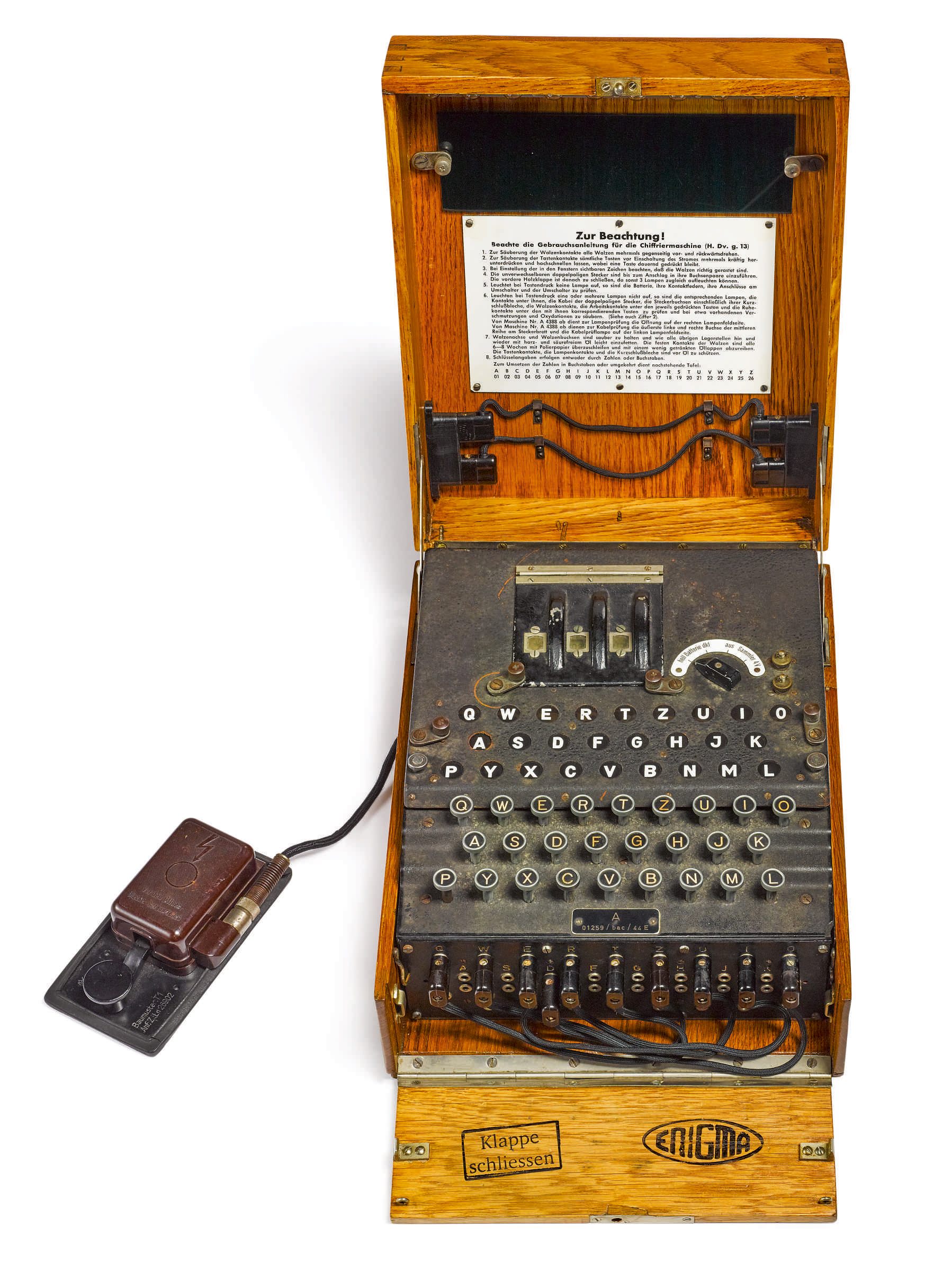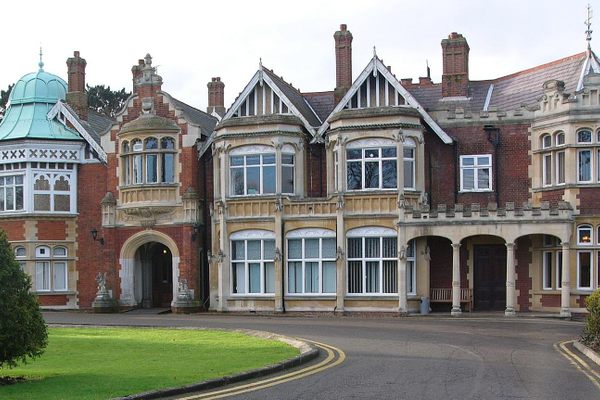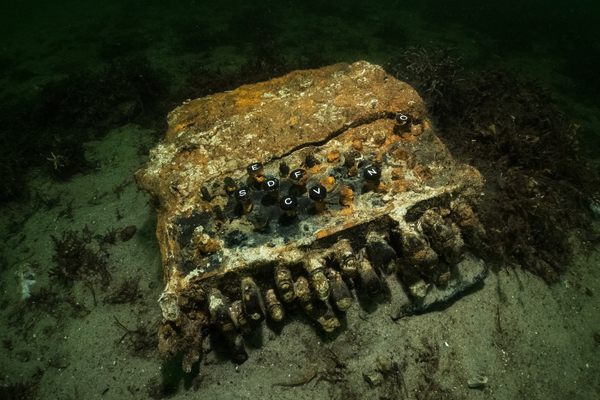For Sale: A Tricky Cipher Machine From WWII
Attention, tinkerers: It’s still solvable.

The orders were to destroy the evidence. The cipher machines held secret, valuable information, so when a Nazi encampment was on the verge of being seized, troops were instructed to dispose of their aptly named Enigma machines so that there was no code left to crack.
Time permitting, they would “open the machine, rip out the rotors, rip out the cables, bash in the machine with the butt of their rifle, and then throw it in the fire,” says Cassandra Hatton, a senior specialist at Sotheby’s who focuses on books, manuscripts, and the history of science. Sailors using similar devices at sea would pitch them overboard. Rusted-out, moldering ciphers have been found on the floor of the Atlantic, Hatton says.
But there wasn’t always time to so thoroughly dismantle the devices. Sometimes, troops stowed the contraptions where they thought the Allies wouldn’t look. Tucked away in attics or barns, some of them survived. One still-functional Three-Rotor Enigma I Cipher Machine has made its way to Sotheby’s, where it will go under the hammer on November 30.
This three-wheeler would have been used by the German Heer (army) or the Luftwaffe (air force), Hatton says—naval machines eventually had four rotors. Because these machines were conceived to be covert, it’s hard to say exactly how many were in circulation, Hatton adds, or precisely when and where each was used. Judging by the serial number on this one, though, it was manufactured in 1944 by the Olympia Büromaschinenwerke company, an outfit better known for typewriters, for Heimsoeth und Rinke.

Until Alan Turing and his collaborators at Bletchley Park devised the bombe, an instrument to decipher the code, crackerjack sleuths were crunching possible combinations by hand. Since the Nazis reset the codes nearly every day, the teams started from scratch each morning. Decoding them was a tall order, because the permutations were complex: Each rotor had 26 possible positions, and no letter was encoded to itself. Writers would type their message on a keyboard, and the rotors would lock the letters in place.*
The messages were insulated against prying eyes and loose lips, too, with the information decentralized for maximal secrecy. “One person would have been doing the encryption, another would have written down the scrambled message, and another would send it via Morse code,” Hatton explains. “The person sending it via Morse code would have no idea what the original message was.” In general, dispatches probably had to do with locations and movements of troops, and the timing of attacks.
Relatively few of these machines remain, and many of those that do, Hatton says, are shells of their more-secret selves—a chassis, for instance, stripped of its cables, or retrofitted with reproductions. (Even if these look fairly convincing, they often lack the stamped designs or patina that an original would carry.) “Parts would break, cables would rip,” Hatton says. “To find one that has the components, that’s really rare.” The auctioneers expect this one to fetch at least $180,000. If you’re looking to keep your diary really, truly private, it might be priceless.
*Update 12/6/2018: This post has been updated to better describe the nature of the machine for sale.














Follow us on Twitter to get the latest on the world's hidden wonders.
Like us on Facebook to get the latest on the world's hidden wonders.
Follow us on Twitter Like us on Facebook